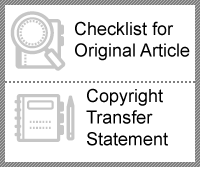| abstract |
| Background Augmented Reality (AR) picture books combine the tactile benefits of traditional books with the interactivity of digital media, offering a new reading experience. However, they often fail to sustain readers' interest and are short-lived. This study aims to create a framework for analyzing interactions between paper and AR media to support lasting engagement.
Methods A literature review was conducted to define AR picture book concepts and their differences from printed and digital books. A framework was then developed based on prior studies and applied to analyze current AR picture book examples.
Result This study developed a framework to analyze user interactions in AR picture books. The framework categorizes interactions into: 1) paper-based interactions, such as page-turning and tactile control; 2) augmented content-based interactions, such as language, touch, and motion gestures; and 3) interaction outcomes, such as changes in graphics, story progression, sound, and tactile expressions. Using this framework, examples were analyzed, and interaction types were classified as storytelling support, exploratory play, and active learning.
Conclusion This study provides significance by systematically analyzing the often-overlooked physical interactions of readers in AR picture books, distinguishing between paper-based and augmented content-based interactions. It is expected to contribute as foundational research for enhancing interactivity and guiding the development of AR picture books that sustain readers' engagement and interest. |
|
|
| Key Words |
| 증강현실 그림책, 상호작용, 종이 그림책, Augmented Reality Picture Book, Interaction, Paper Picture Books |
|
|
|
 |
|






